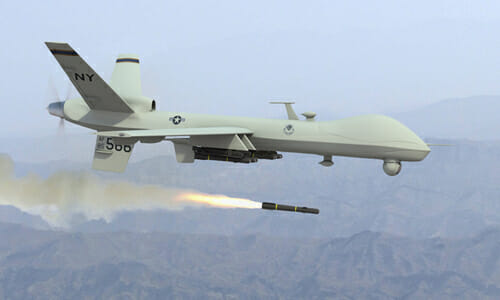President Joe Biden warned those behind a deadly terrorist attack that killed and wounded American service members and Afghan civilians in Kabul on Thursday that the U.S. would “hunt you down and make you pay.”
A day later, he followed through on that threat.
The Pentagon announced late Friday that a military drone strike targeted a planner for ISIS-K, the first American attack on the terrorist group following a bomb attack at Hamid Karzai International Airport.
Among the 92 killed in Thursday’s suicide blast, claimed by Afghanistan’s Islamic State affiliate, were 13 U.S. service members, the most lethal incident for U.S. troops in Afghanistan in a decade.
According to the Pentagon, there were no civilian casualties from the strike and US forces were prepared for more attacks from ISIS even as they continue to airlift people out of the war-torn Taliban controlled Afghanistan.
“Initial indications are that we killed the target. We know of no civilian casualties,” the U.S. military said in a statement, referring to the overnight drone strike.
U.S. Central Command said the strike took place in Nangarhar province, east of Kabul and bordering Pakistan. It did not say whether the target was connected with the airport attack.
According to Reuters, residents of Jalalabad city, capital of Nangarhar, said they heard several explosions from an air strike around midnight on Friday though it was not clear if the blasts were caused by a U.S. drone.
The White House said the next few days were likely to be the most dangerous of the U.S. evacuation operation that the Pentagon said has taken about 111,000 people out of Afghanistan in the past two weeks
Pentagon spokesman John Kirby said the United States believed there were still “specific, credible” threats against the airport after the bombing at one of its gates.
“We certainly are prepared and would expect future attempts,” Kirby told reporters in Washington. “We’re monitoring these threats, very, very specifically, virtually in real time.”

